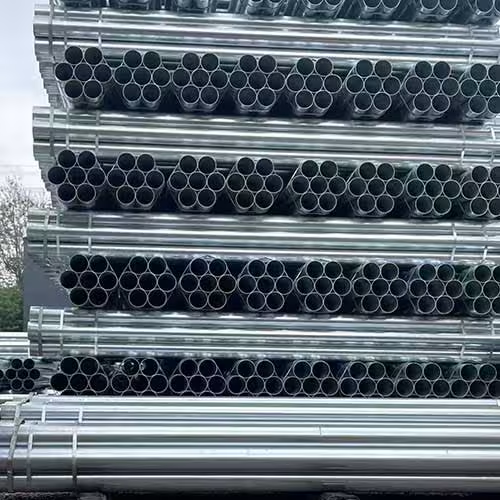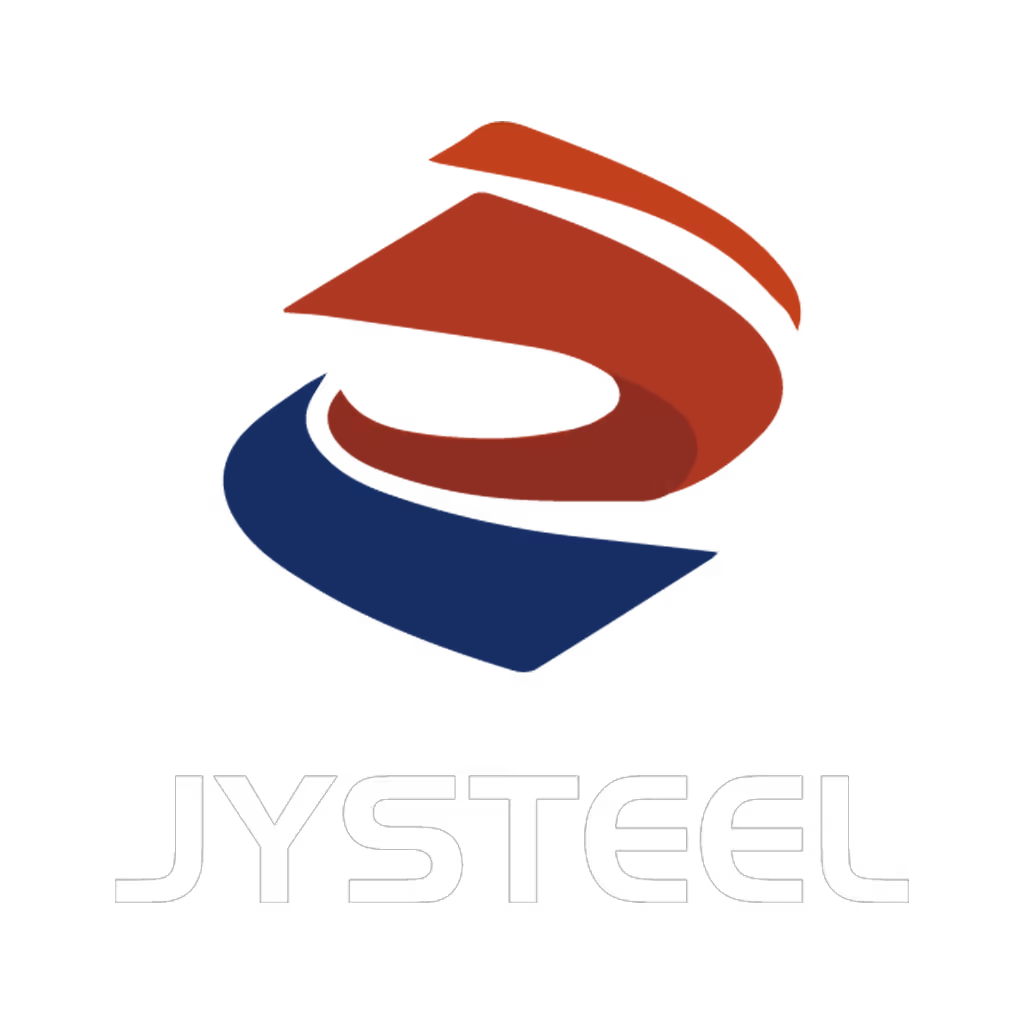مرحبًا بك في مدونتي!
قبل أن نتعمق في المحتوى، أود أن تنضموا إليّ على منصات التواصل الاجتماعي الخاصة بي حيث أشارك المزيد من الأفكار وأتفاعل مع المجتمع وأنشر التحديثات. إليك كيف يمكنك التواصل معي:
فيسبوك : فيسبوكhttps://www.facebook.com/profile.php?id=61565500692293
والآن، لنبدأ رحلتنا معًا. آمل أن تجدوا المحتوى هنا ثاقباً وجذاباً وقيّماً.
جدول المحتويات
مقدمة

The question what is galvanized steel pipe often arises in industries like construction, plumbing, and manufacturing, where durability and corrosion resistance are critical. Galvanized steel pipe is steel tubing coated with a zinc layer to protect against rust, extending its lifespan in harsh environments.
يستكشف هذا الدليل ما هي الأنابيب الفولاذية المجلفنة، ويوضح بالتفصيل عملية تصنيعها وخصائصها وتطبيقاتها.
Understanding What Is أنابيب الصلب المجلفن
To address what is galvanized steel pipe, it’s essential to understand its composition and purpose. Galvanized steel pipe is made from carbon steel tubing coated with zinc through a process called galvanization, which enhances its resistance to corrosion. This makes it ideal for applications exposed to moisture, such as water supply lines, outdoor structures, and agricultural systems. The zinc coating acts as a sacrificial anode, corroding before the steel, thus protecting the pipe’s structural integrity.
The significance of what is galvanized steel pipe lies in its ability to combine steel’s strength with enhanced durability. Available in various sizes and thicknesses, these pipes are used in plumbing, fencing, and infrastructure projects. This section outlines its core characteristics and benefits, setting the stage for a deeper exploration of its manufacturing and applications.
Defining Galvanized Steel Pipe
When exploring what is galvanized steel pipe, it’s a steel pipe coated with zinc to prevent rust. The steel provides strength and rigidity, while the zinc layer shields it from environmental factors like water, salt, and air. Common types include seamless and welded pipes, with the latter often used for cost-effective applications like scaffolding.
Benefits of Galvanized Steel Pipe
Understanding what is galvanized steel pipe highlights its advantages: superior corrosion resistance, long lifespan (often 40–50 years), and low maintenance. It’s cost-effective for projects requiring durable piping, such as water distribution or structural supports, and its recyclability aligns with sustainability goals, making it a preferred choice in various industries.
عملية التصنيع أنابيب الصلب المجلفن
The answer to what is galvanized steel pipe is incomplete without exploring how it’s made. The manufacturing process involves creating steel pipes and applying a zinc coating through galvanization. This section provides a technical overview of the steps, offering insights for professionals seeking to understand production techniques.
Steel Pipe Fabrication
The process begins with fabricating the steel pipe. Raw steel, typically low-carbon, is formed into tubes through hot rolling or cold forming. Welded pipes are made by bending steel sheets into a tube and welding the seam, while seamless pipes are created by extruding heated steel billets. This stage ensures the pipe’s structural integrity before galvanization in the what is galvanized steel pipe manufacturing process.
Surface Preparation for Galvanization
Before galvanizing, the steel pipe undergoes surface preparation to ensure effective zinc adhesion. Pipes are cleaned in a degreasing solution to remove oils, then pickled in an acid bath (e.g., sulfuric acid) to remove scale and rust. A flux solution (often zinc ammonium chloride) is applied to prevent oxidation, preparing the pipe for the what is galvanized steel pipe galvanization step.
Hot-Dip Galvanization Process
The core of what is galvanized steel pipe production is hot-dip galvanization. Cleaned pipes are submerged in a bath of molten zinc at approximately 450°C. The zinc bonds metallurgically with the steel, forming a series of zinc-iron alloy layers topped with a pure zinc coating. This process ensures uniform coverage, enhancing corrosion resistance for applications like plumbing and outdoor structures.
التبريد والفحص
After galvanization, pipes are cooled in water or air to solidify the zinc coating. Quality inspections check coating thickness (typically 50–100 microns), uniformity, and adherence using methods like magnetic thickness gauges or visual checks. This stage of the what is galvanized steel pipe process ensures compliance with standards like ASTM A123 or ISO 1461, guaranteeing durability.
Finishing and Cutting
Galvanized pipes may undergo finishing processes, such as threading for plumbing connections or cutting to specific lengths. Protective coatings, like chromate passivation, may be applied to enhance zinc durability. These final steps in the what is galvanized steel pipe manufacturing process prepare the pipes for distribution and use in various applications.
Comparison Table and Applications of Galvanized Steel Pipe
To clarify what is galvanized steel pipe, the following table summarizes its key characteristics, manufacturing steps, and applications, offering a concise reference for professionals.
| Characteristic/Step | الوصف | Application/Role |
|---|---|---|
| Steel Pipe Fabrication | Forms steel into welded or seamless tubes | Provides structural base for pipes |
| تحضير السطح | Cleans and preps steel for zinc adhesion | Ensures effective galvanization |
| Hot-Dip Galvanization | Coats steel with molten zinc at 450°C | Enhances corrosion resistance |
| التبريد والفحص | Solidifies zinc and checks coating quality | Guarantees durability and standard compliance |
| Finishing and Cutting | Threads, cuts, or applies protective coatings | Prepares pipes for specific uses |
| مقاومة التآكل | Zinc acts as sacrificial anode | Extends lifespan in water lines, fencing |
| المتانة | Withstands harsh environments for decades | Supports long-term use in infrastructure |
Applications of Galvanized Steel Pipe
The answer to what is galvanized steel pipe extends to its applications. In plumbing, it’s used for water supply lines due to its corrosion resistance. Construction employs it for scaffolding, railings, and structural supports. Agriculture relies on galvanized pipes for irrigation systems, while fencing and outdoor furniture benefit from its durability, showcasing its versatility.
Selecting Galvanized Steel Pipe for Specific Uses
When considering what is galvanized steel pipe for a project, match pipe specifications to needs. For water lines, choose pipes with thicker zinc coatings (e.g., per ASTM A53). For structural applications, prioritize welded pipes for cost-efficiency. Ensure compliance with local codes, such as ASME B36.10, to meet safety and performance requirements.
Practical Considerations for Using Galvanized Steel Pipe

Using galvanized steel pipe effectively requires understanding its properties and implementation. This section offers actionable guidance for engineers, contractors, and facility managers.
Choosing the Right Galvanized Steel Pipe
Select galvanized steel pipe based on application, environment, and specifications. For potable water, ensure compliance with standards like NSF/ANSI 61 to avoid zinc leaching. For outdoor use, opt for heavier galvanization (e.g., 70 microns). Verify pipe diameter and wall thickness to match pressure or structural requirements, ensuring optimal performance.
Installation Best Practices
Proper installation is key to leveraging what is galvanized steel pipe. Use threaded or welded joints for secure connections, applying thread sealants to prevent leaks. Avoid mixing with dissimilar metals (e.g., copper) to prevent galvanic corrosion. Ensure proper alignment and support to minimize stress, following guidelines like those from the American Water Works Association (AWWA).
Maintenance and Inspection
Galvanized steel pipe requires minimal maintenance due to its corrosion resistance, but periodic inspections are essential. Check for zinc coating wear or pitting in harsh environments, using visual or ultrasonic methods. Clean pipes with mild detergents to remove debris, avoiding abrasive tools that could damage the coating, ensuring longevity.
Environmental and Safety Considerations
When using galvanized steel pipe, consider environmental factors. Zinc runoff in sensitive ecosystems requires containment measures. During cutting or welding, ensure ventilation to avoid inhaling zinc fumes, adhering to OSHA guidelines. The recyclability of galvanized steel supports sustainability, aligning with green building standards like LEED.
Limitations and Alternatives
While addressing what is galvanized steel pipe, note its limitations. It’s less suitable for high-temperature applications (above 200°C) due to zinc coating degradation. In acidic environments, zinc may corrode faster. Alternatives like stainless steel or plastic pipes may be considered for specific conditions, but galvanized steel remains cost-effective for many uses.
الخاتمة
Understanding what is galvanized steel pipe reveals its value in delivering corrosion-resistant, durable solutions for plumbing, construction, and agriculture. Its manufacturing process ensures long-lasting performance, making it a reliable choice.
This guide provides insights to select and use galvanized steel pipe effectively, enhancing project outcomes.
الأسئلة الشائعة
What is galvanized steel pipe?
Galvanized steel pipe is steel tubing coated with zinc to resist corrosion, used in plumbing, construction, and outdoor applications for its durability.
How is galvanized steel pipe made?
It’s made by fabricating steel pipes, cleaning them, dipping them in molten zinc at 450°C, cooling, and inspecting for coating quality.
What are the benefits of galvanized steel pipe?
It offers corrosion resistance, a long lifespan (40–50 years), low maintenance, and recyclability, ideal for water lines and structures.
Where is galvanized steel pipe commonly used?
It’s used in water supply lines, scaffolding, railings, irrigation systems, fencing, and outdoor furniture due to its durability.
How do I choose the right galvanized steel pipe?
Match pipe size, zinc coating thickness, and standards (e.g., ASTM A53) to application needs, considering environment and pressure requirements.

